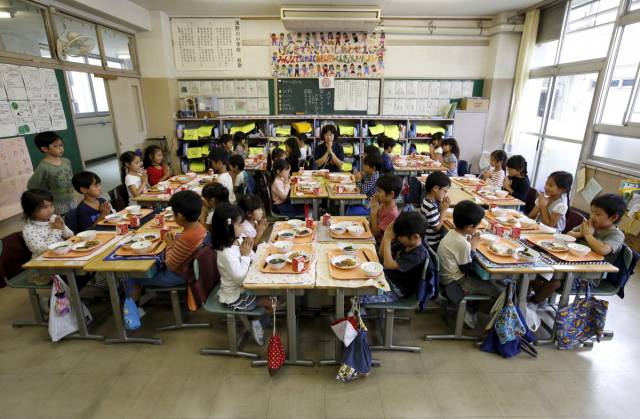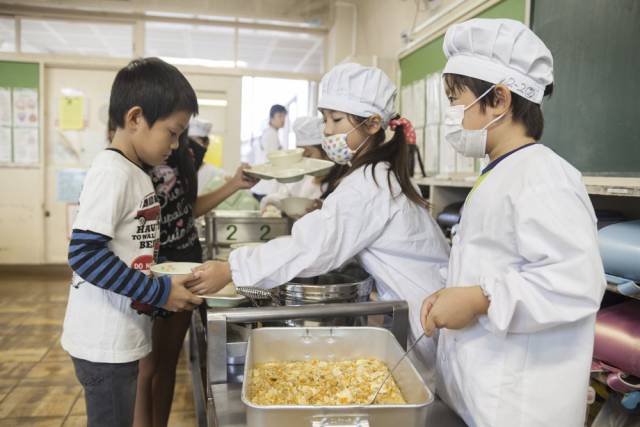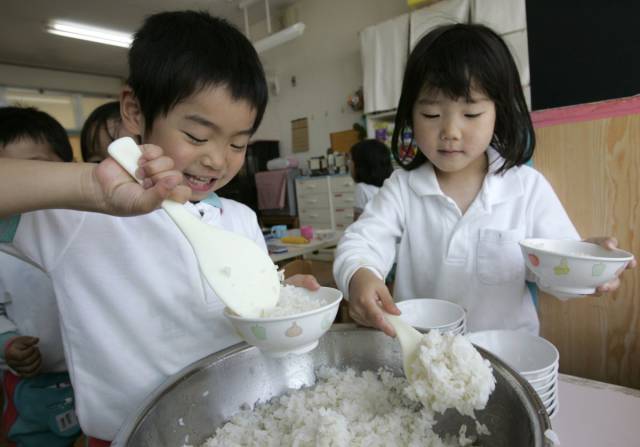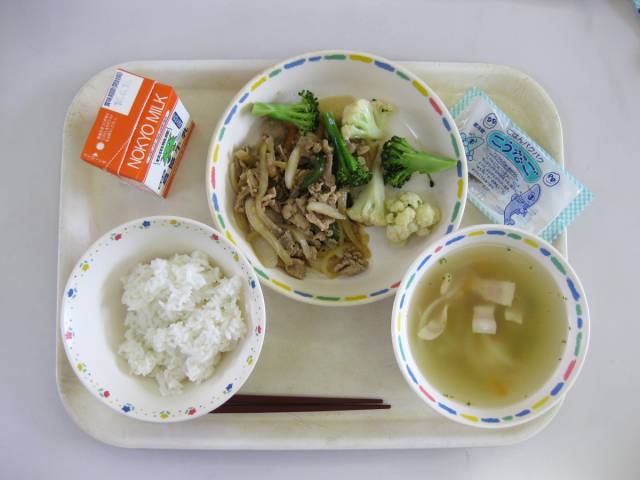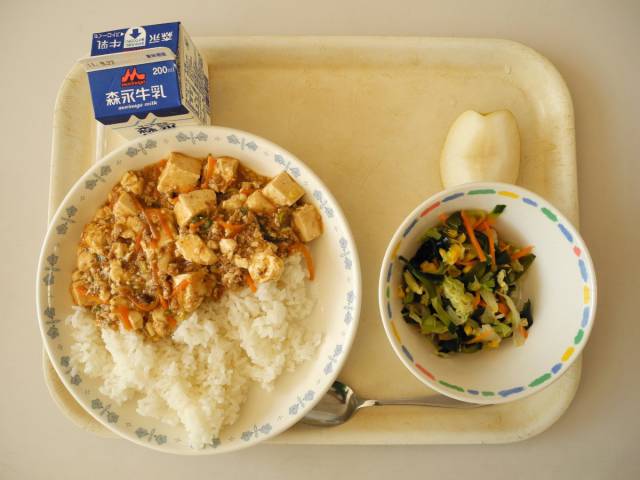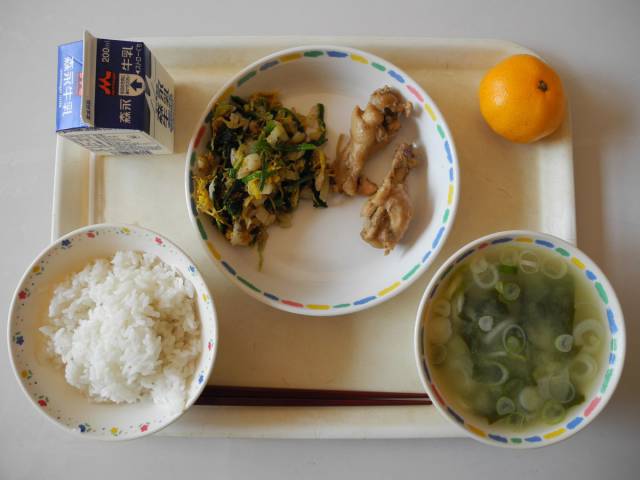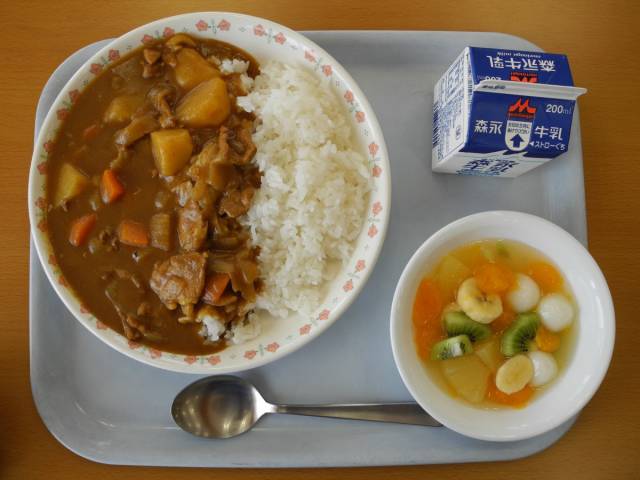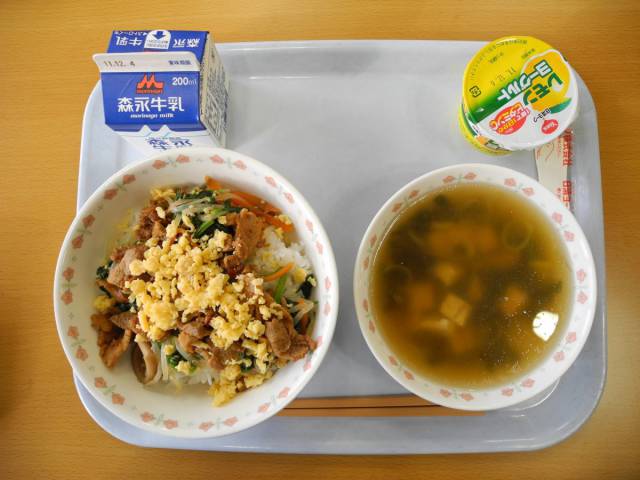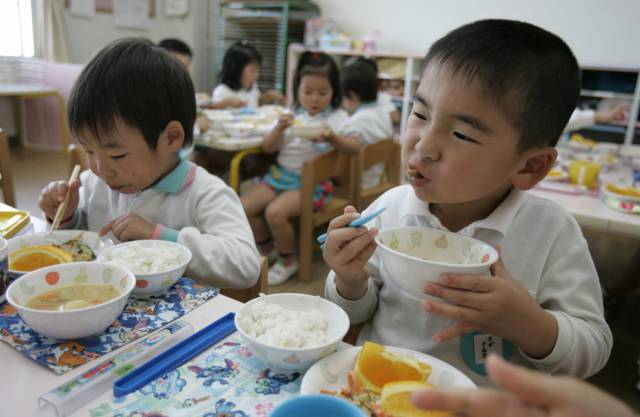Japanese people know that what you eat affects you massively and they learn it at a very young age. For them, school lunch is a crucial part of education – not a break from it. That’s why they try so hard to keep children’s meals so healthy and nutritious.
Lunchtime in Japanese primary schools is almost sacred. It isn't hurried or hasty — kids get the time just to sit and eat.
Kids serve one another in an effort to reinforce a culture of self-sufficiency. In many schools, there is no janitor. Kids learn to pick up after themselves.
Rice has been a staple for decades, but it wasn't until the 1970s that school lunches began to look mostly like what they do today.
Lunch often comes with a main dish, rice, and a side soup. This lunch has miso soup, a small packet of dried fish, milk, rice, and pork fried with vegetables.
Another option might include tofu with meat sauce on rice, paired with a salad, apple, and carton of milk.
At Jinego Elementary School, in Akita Prefecture, a typical lunch includes chicken, rice, miso wakame soup, vegetable salad, milk, and a tangerine.
Jinego Elementary will occasionally offer curry and rice, which comes with milk and fruit salad. Many other schools will offer Korean or Italian food at least once a week.
About 25 miles away, Yashima Junior High School offers students rice, pork, and egg; lemon yogurt; tofu seaweed soup; and milk.
The end result isn't just a satisfied student body, but one that learns responsibility and healthy eating habits. Japan's life expectancy is among the highest in the world, while it's rate of obesity is well below the global average.
With the end of any good meal comes one inevitability: naptime.

